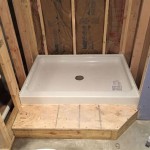How to Insulate Basement Block Walls
Insulating basement block walls is crucial for several reasons. It enhances energy efficiency, reduces heating and cooling costs, eliminates cold spots, minimizes moisture and mold problems, and creates a more comfortable living space.
Reasons to Insulate Basement Block Walls
- Energy Efficiency: Insulating walls prevents heat loss in winter and heat gain in summer, reducing energy consumption.
- Cost Savings: Improved energy efficiency results in lower utility bills, saving money on heating and cooling costs.
- Comfort: Insulation eliminates cold spots, creating a more comfortable and consistent temperature throughout the basement.
- Moisture Control: Insulation helps prevent moisture penetration, reducing the risk of mold and mildew growth.
- Improved Living Space: A comfortable and well-insulated basement can be converted into a living area, playroom, or storage space.
Methods of Insulating Basement Block Walls
There are several methods for insulating basement block walls, including:- Interior Insulation: This involves installing rigid foam panels or spray foam directly against the interior surface of the wall.
- Exterior Insulation: Insulation boards are applied to the exterior surface of the wall and covered with a waterproof membrane.
- Closed-Cell Spray Foam: A waterproof foam is sprayed directly onto the wall surface, providing both insulation and moisture protection.
Steps for Installing Interior Insulation
- Prepare the Wall: Clean and seal any cracks or gaps in the block wall using caulk or spray foam.
- Attach Foam Panels: Apply adhesive to the foam panels and press them firmly against the wall surface, starting from the bottom and working upwards.
- Seal Joints: Fill any gaps between the panels using expanding spray foam for a tight seal.
- Finish: Cover the foam insulation with drywall, paneling, or other wall finishes.
Factors to Consider When Choosing Insulation
When selecting insulation for basement block walls, consider factors such as:- R-Value: A higher R-value indicates better insulation performance.
- Moisture Resistance: Choose insulation that is waterproof or moisture-resistant to prevent moisture penetration.
- Fire Safety: Ensure the insulation meets fire safety codes to prevent combustion.
- Cost: Insulation materials vary in price, so consider the cost when choosing.
- Ease of Installation: Opt for insulation that is easy to install to save time and effort.
Benefits of Insulating Basement Block Walls
Insulating basement block walls offers numerous benefits, including:- Energy Savings: Reduced energy consumption and lower utility bills.
- Enhanced Comfort: Eliminated cold spots and a more consistent temperature.
- Moisture Protection: Reduced risk of mold and mildew growth.
- Improved Indoor Air Quality: Insulation can trap dust and allergens, improving indoor air quality.
- Increased Property Value: A well-insulated basement can increase the value of a property.
Three Ways To Insulate A Basement Wall Greenbuildingadvisor
How To Insulate A Basement Wall Greenbuildingadvisor
Adding Insulation To Basement Walls Fine Homebuilding
How To Insulate Your Basement S Concrete Walls The Seattle Times
How To Insulate Basement Walls True Value
Basement Wall Insulation Naturalgasefficiency Org
Basement Wall And Floor Insulation Water Management Greenbuildingadvisor
Keeping The Heat In Section 6 Basement Insulation Floors Walls And Crawl Spaces
Doe Building Foundations Section 2 1 Insulation
3 Ways To Insulate Basement Walls Wikihow Life








